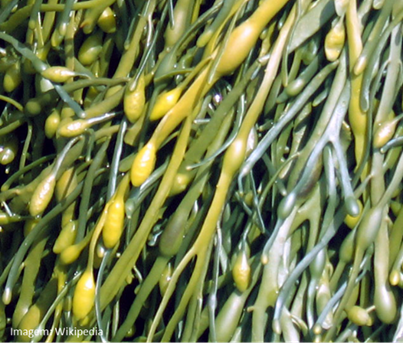What is the most correct terminology?
Legally, our legislation does not include the term biostimulant as a product registration class, however, products containing components that stimulate growth, increase quality or productivity and which do not qualify the agrochemical class or exclusively nutrient sources, are contemplated by Decree 4,954 of January 14, 2004 in the class of "biofertilizers" within the fertilizer legislation, being defined as: "product that contains active principle or organic agent, free from agrotoxic substances, capable of acting, directly or indirectly, on all or part of the cultivated plants, increasing their productivity, without taking into account their hormonal or stimulating value”, I further subdivide into the following groups: amino acids obtained by fermentation or hydrolysis of natural organic materials; humic acids, fulvic acids and humins; seaweed extracts or processed seaweed; plant extracts; mixture of two or more biofertilizers from the amino acid groups, humic substances, algae extracts, plant extracts and other approved organic principles or agents (Brasil, 2020).
Why think about the application of biofertilizers?
Regardless of their composition, they stimulate natural processes that benefit absorption, efficient use of nutrients, tolerance to abiotic stress and/or the quality of the crop, regardless of their nutritional content (Du Jardin, 2015), therefore, when we think about the practical applicability of their use, both quantitative characteristics such as productivity per hectare, and qualitative characteristics such as protein content, stress tolerance, increase in leaf area, among others, are potential positions for existing technologies. Studies on different technologies in the segment also report gains in biomass, increased gene expression of defense proteins, antioxidant system, chlorophyll production, stomatal conductance and other biochemical and physiological reactions related to plant development.
Main categories of biofertilizers
Humic and Fulvic Acids
Humic substances (HS) are natural constituents of soil organic matter, resulting from the decomposition of plant, animal and microbial residues, but also from the metabolic activity of soil microbes from these substrates.
Traditionally used as soil conditioners aiming to increase its cation exchange capacity (CTC), its application has varied results, with preference for use in areas with low CTC and organic matter, improve nutrient absorption by the root system and promote the organ growth by mechanisms related to the release of plant hormone pathways, as well as increased cellular respiration and invertases activity (Jindo et al., 2012).

Amino acids
Naturally produced by vegetables and used in the formation of proteins, its structure is similar to a central carbon linked to the amine group (NH2), carboxylic group (COOH), hydrogen and a characteristic radical of each amino acid, with 20 basic variations necessary for development being known. of plants and identified with glycine, alanine, serine, cysteine, tyrosine, arginine, aspartic acid, glutamic acid, histidine, asparagine, glutamine, proline, phenylalanine, valine, tryptophan, threonine, lysine, leucine, isoleucine, methionine.

Seaweed extracts

As unlikely as it may seem at first contact, the use of seaweed is perhaps the oldest of the technologies related to biofertilizers, and is currently widely used for this purpose in seed treatments and foliar applications. Its constitution varies depending on the type of algae, as well as the time of harvesting the algae in its production environment. In general, the constituents that contribute to plant growth promotion include micro and macronutrients, sterols, nitrogen-containing compounds and hormones (Khan et al., 2009). Several of these compounds are in fact unique in their algae source, explaining the growing interest of the scientific community and industry in these taxonomic groups.
Plant hormones
In addition to the use of technologies with traces of phytohormones or hormonal precursors, the use of readily available synthetic hormonal forms for plants is also part of a large part of commercial management. With the possibility of the isolated application of a certain hormone, such tools present the same operating principles as formulations composed of biofertilizers based on seaweed or extracts, with the concentration of active being identified, however.
Depending on the hormonal balance of the composition, responses consistent with the hormone function are expected. The commercial activity of products based on hormonal biofertilizers in soy has greater emphasis on hormones linked to growth (auxin, gibberellin and cytokinin) and with less expression of products based on regulators (abscisic acid and ethylene).
Conclusion
When analyzing the general physiological functions resulting from the use of biofertilizers, it is clear that they should not be understood as a way to replace the supply of nutrients, but rather to optimize processes. Among different experiences, the need to make agricultural production more sustainable to climatic and economic fluctuations drive the market for biofertilizers, which despite naturally existing doubts about new technologies, have already proved to be one of the few existing strategies for managing plant stress in commercial crops .
Bibliography
BRASIL. INSTRUÇÃO NORMATIVA Nº 61, DE 8 DE JULHO DE 2020. MAPA – Disponível em: https://www.in.gov.br/web/dou/-/instrucao-normativa-n-61-de-8-de-julho-de-2020-266802148. Acessado em: 25/01/2021
Du Jardin, P. Plant biostimulants: Definition, concept, main categories and regulation. Scientia Horticulturae 196 (2015) 3-14;
Jindo, K., Martim, S.A., Navarro, E.C., Aguiar, N.O., Canellas, L.P., 2012. Root growthpromotion by humic acids from composted and non-composted urban organicwastes. Plant Soil 353, 209–220.
Khan, W., Rayirath, U.P., Subramanian, S., Jithesh, M.N., Rayorath, P., Hodges, D.M.,Critchley, A.T., Craigie, J.S., Norrie, J., Prithiviraj, B., 2009. Seaweed extracts asbiostimulants of plant growth and development. J. Plant Growth Regul. 28,386–399.




